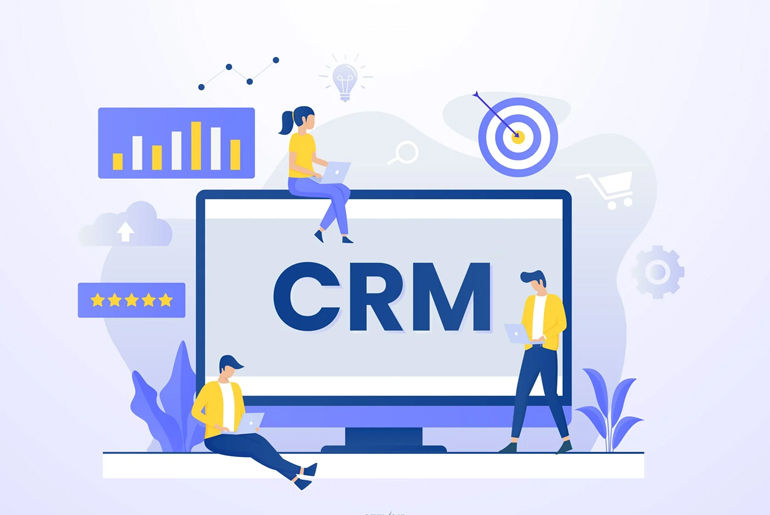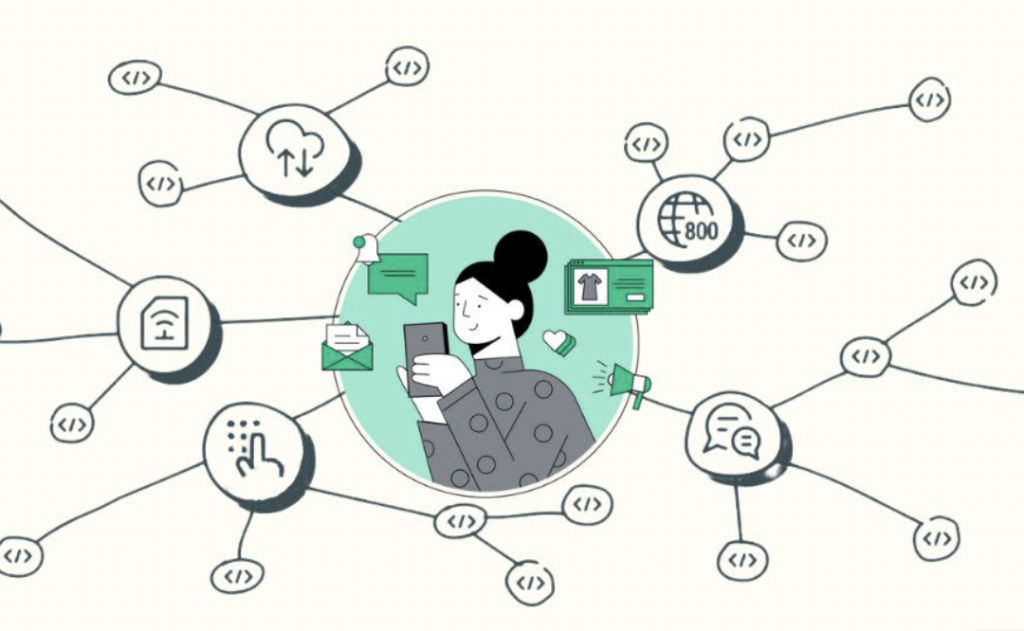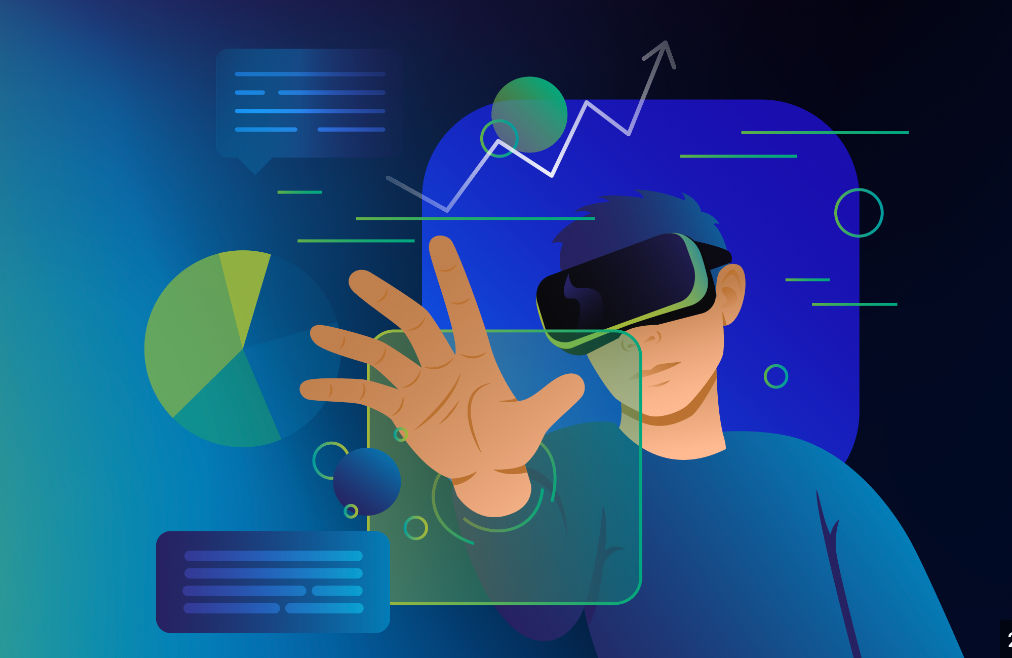CRM software is essential for business success, helping manage customer interactions, streamline sales, and build lasting relationships. As customer satisfaction grows in importance, CRM has evolved from simple contact management to AI-driven solutions. This article explores the top 10 emerging trends shaping the future of CRM. But first, here are our top CRM software picks:
Table of Contents
Top 10 Emerging Trends and Technologies

Artificial Intelligence (AI) Integration
The integration of Artificial Intelligence (AI) and machine learning algorithms in CRM systems marks a significant advancement in customer relationship management strategies. AI empowers CRM platforms with the ability to analyze vast amounts of data in real time, enabling businesses to extract valuable insights and make data-driven decisions. One prominent role of AI in CRM is predictive analytics, where algorithms forecast future customer behaviors and trends based on historical data. By leveraging predictive analytics, businesses can anticipate customer needs, optimize marketing campaigns, and proactively address issues before they arise.
Furthermore, AI plays a crucial role in customer segmentation by automatically categorizing customers into distinct groups based on their preferences, behaviors, and demographics. This enables businesses to tailor marketing messages, product recommendations, and service offerings to meet the unique needs of each segment, ultimately enhancing customer satisfaction and loyalty.
Moreover, AI-driven personalization capabilities enable CRM systems to deliver hyper-personalized customer experiences across various touchpoints. By analyzing customer interactions and preferences, AI algorithms can recommend relevant products, provide personalized recommendations, and offer proactive support, fostering deeper connections and driving customer engagement.
Predictive Analytics for Enhanced Insights
Predictive analytics is revolutionizing CRM by offering unparalleled insights into customer behavior and market trends. By analyzing historical data, predictive analytics algorithms can identify patterns and trends, enabling businesses to anticipate future customer actions with precision. One key application of predictive analytics in CRM is lead scoring, where algorithms evaluate lead characteristics and behaviors to prioritize sales efforts and focus resources on high-value prospects.
Additionally, predictive analytics facilitates churn prediction by identifying at-risk customers based on their engagement patterns and likelihood to churn. This enables businesses to implement proactive retention strategies and mitigate customer attrition effectively.
Furthermore, predictive analytics powers accurate sales forecasting by analyzing historical sales data, market trends, and external factors. This enables businesses to make informed decisions, allocate resources efficiently, and drive revenue growth.
Omni-Channel Customer Engagement

Omni-channel CRM (Customer Relationship Management) involves providing a seamless and consistent experience to customers across various channels, including email, social media, phone, websites, and physical stores. It recognizes that modern customers interact with businesses through multiple touchpoints and expect a unified experience regardless of the channel they choose. This approach ensures that customers receive consistent messaging, personalized interactions, and seamless transitions between channels, enhancing their overall experience and fostering loyalty.
Emerging technologies are playing a crucial role in facilitating seamless omni-channel integration. For instance, advanced data analytics and customer data platforms enable businesses to consolidate customer data from disparate sources and create a unified view of each customer. This comprehensive understanding allows companies to deliver personalized and contextually relevant experiences across all touchpoints.
Moreover, AI-powered chatbots and virtual assistants can engage with customers in real time, providing immediate assistance and guiding them through their journey across different channels. Additionally, cloud-based CRM platforms enable real-time synchronization of customer data, ensuring that agents have access to the latest information regardless of the channel used for interaction. These technologies collectively empower businesses to deliver seamless omnichannel experiences, driving customer satisfaction and loyalty.
Voice-Based CRM Interfaces
The rising popularity of voice-based interfaces, including virtual assistants and voice-activated commands, in CRM systems signifies a significant shift towards more intuitive and efficient customer interactions. These interfaces allow users to interact with CRM platforms using natural language commands, streamlining tasks and enhancing user experiences.
Voice-based CRM offers several benefits, foremost among them being improved productivity for sales teams. Sales representatives can quickly access important information, update records, and schedule tasks using voice commands, eliminating the need for manual data entry and allowing them to focus more on building relationships with customers.
Moreover, voice-based CRM enhances user experiences by providing a more intuitive and convenient interface for accessing CRM functionalities. Users can retrieve information, make updates, and perform various tasks hands-free, thereby increasing efficiency and reducing the time spent navigating through complex CRM interfaces. Overall, voice-based CRM interfaces contribute to a more streamlined and user-friendly experience, driving productivity and improving customer engagement.
Blockchain for Data Security and Trust
Blockchain technology is being integrated into CRM systems to bolster data security and foster trust among users. In CRM, blockchain facilitates secure storage and management of customer data by employing decentralized and immutable ledgers. Each transaction or data entry is encrypted and linked to previous records, creating a transparent and tamper-proof chain of information.
Blockchain ensures the integrity of customer data and transactions by providing a decentralized and distributed network where data is stored across multiple nodes. This eliminates the risk of a single point of failure and reduces the likelihood of data breaches or unauthorized alterations. Furthermore, blockchain’s cryptographic algorithms ensure that data remains confidential and tamper-resistant, instilling confidence in users regarding the privacy and security of their information within CRM systems.
Customer Data Platforms (CDPs)
Customer Data Platforms (CDPs) are centralized systems that collect, organize, and analyze customer data from various sources, such as CRM systems, marketing automation platforms, e-commerce platforms, and more. They serve as a unified repository for all customer-related information, including demographic data, behavioral data, purchase history, and interactions across different channels.
CDPs play a crucial role in unifying customer data from disparate sources by integrating data from online and offline touchpoints into a single, cohesive platform. This integration allows businesses to gain a comprehensive view of each customer’s interactions and preferences across multiple channels, enabling personalized marketing campaigns, targeted communications, and tailored product recommendations.
By consolidating data from various sources, CDPs enable businesses to create a unified customer profile that provides a holistic understanding of individual customers. This comprehensive view facilitates more informed decision-making, enhances customer segmentation and targeting, and enables personalized experiences that drive customer engagement and loyalty. Overall, CDPs empower businesses to leverage data effectively to deliver exceptional customer experiences and drive business growth.
Augmented Reality (AR) for Enhanced Experiences

Augmented Reality (AR) technology holds immense potential to transform customer experiences within CRM systems by offering immersive and interactive engagements. In CRM, AR enhances product visualization by allowing customers to visualize products in their real-world environments before making a purchase, leading to more informed buying decisions.
Moreover, AR enables the creation of virtual showrooms where customers can explore products and services in a simulated environment, enhancing the browsing experience and driving engagement. Additionally, AR facilitates remote assistance by enabling real-time collaboration between customers and support representatives through virtual annotations and visual guides, improving problem resolution and customer satisfaction.
By integrating AR into CRM systems, businesses can provide innovative and memorable experiences that differentiate their brand, increase customer engagement, and foster stronger relationships with customers.
Chatbots and Conversational AI
The adoption of chatbots and conversational AI in CRM for customer service and support has surged due to their ability to provide efficient and personalized assistance to customers. These intelligent systems streamline customer interactions by offering immediate responses to inquiries, resolving common issues, and guiding users through self-service options.
Chatbots enhance customer experiences by providing real-time assistance round-the-clock, addressing queries promptly, and reducing response times compared to traditional customer support channels. They utilize natural language processing (NLP) and machine learning algorithms to understand customer queries accurately and provide relevant solutions or escalate complex issues to human agents when necessary.
Furthermore, chatbots empower businesses to handle a large volume of inquiries simultaneously, leading to improved operational efficiency and cost savings. By leveraging chatbots and conversational AI in CRM, businesses can deliver exceptional customer service, increase satisfaction levels, and foster long-term relationships with their customers.
IoT Integration for Enhanced Insights
The convergence of CRM and IoT technology is revolutionizing customer relationship management by providing unprecedented insights into customer behavior and preferences. IoT devices and sensors embedded in products, machinery, or environments collect vast amounts of data in real time, which can be integrated into CRM systems to enrich customer profiles and interactions.
By leveraging IoT data, CRM systems can capture real-time insights into how customers interact with products or services, usage patterns, and preferences. For example, IoT-enabled devices can track product usage, monitor equipment performance, or collect environmental data, providing valuable information for personalized marketing, proactive maintenance, and product development.
Moreover, IoT integration enables businesses to anticipate customer needs, deliver timely recommendations or support, and enhance overall customer experiences. By harnessing the power of IoT technology, CRM systems can unlock new opportunities for innovation, efficiency, and customer satisfaction.
Hyper-Personalization with Big Data
Big data analytics plays a pivotal role in enabling hyper-personalization within CRM systems by harnessing vast amounts of customer data to create tailored experiences. By analyzing data from various sources such as transaction history, browsing behavior, demographics, and social media interactions, businesses can gain deep insights into individual preferences, interests, and needs.
With big data analytics, CRM systems can segment customers into micro-segments based on their unique characteristics and behaviors, allowing businesses to deliver highly targeted marketing campaigns, personalized product recommendations, and customized messaging. Furthermore, machine learning algorithms can dynamically adapt and refine these personalizations over time based on real-time feedback and interactions.
Through hyper-personalization, businesses can enhance customer engagement, loyalty, and satisfaction by delivering relevant and meaningful experiences that resonate with each individual customer. This data-driven approach empowers businesses to establish stronger connections with customers, drive conversions, and foster long-term relationships.
Conclusion
The CRM landscape is undergoing a profound transformation driven by several emerging trends and technologies. From the integration of Artificial Intelligence and predictive analytics to the adoption of omnichannel engagement strategies and the utilization of blockchain and IoT, businesses are leveraging innovative solutions to revolutionize customer relationship management. Businesses must embrace these innovations to stay competitive and meet evolving customer expectations. By adopting AI-powered chatbots for real-time assistance, implementing omnichannel strategies for consistent customer experiences, and leveraging big data analytics for hyper-personalization, companies can enhance customer satisfaction, drive loyalty, and gain a competitive edge in today’s dynamic market.
We encourage readers to explore and adopt these emerging trends in their CRM strategies to unlock new opportunities, improve efficiency, and deliver exceptional customer experiences that drive business growth and success in the digital age.